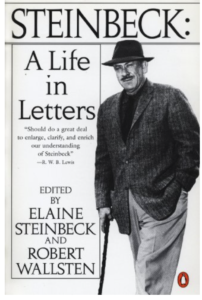“Two things control men’s nature, instinct and experience.” – Blaise Pascal
Head vs. Gut, Part II:
How to Educate Your Gut Instinct to Help You Make Profitable Decisions
In Part I of this essay, we talked about gut instinct – what it is and why it is such an important ability to develop as you work yourself up to the top ranks of business and wealth building. Today, I want to suggest a system for developing an A-level gut instinct.
JSN, my second important mentor in business, was also the person that taught me my first important lessons about building wealth.
Of his many impressive qualities (a great memory, a mind for details, a skilled negotiator, etc.), the one that most impressed me was his uncanny knack for knowing almost instantaneously whether or not a business idea would work.
He had, in other words, a world-class gut instinct for money-making ideas. It was much better than mine, and much, much better than that of most of the businesspeople I’ve worked with since. I thought of him as a kind of profit shark. In a vast sea of money-making opportunities, he could detect, sometimes from a great distance, the one that had blood in it.
Back then, I thought of this talent as inborn. Now, I believe it’s actually a skill that can be developed.
According to the Harvard Business Review article we looked at in Part I, gut instinct is an aspect of emotional intelligence that resides in the part of the brain that recognizes and stores patterns. When it sees such patterns again, it sends an urgent emotional message to the conscious mind.
In one situation, it may say, “Watch out! This is going to end badly.” In another situation, it may say, “Wow! This sounds great. Jump on it!”
This process, as I said, is based on pattern recognition. And though the stored patterns are not the result of rational analysis, it’s quite possible that they can match up with rational, experience-based conclusions that have been made by the conscious, rational mind.
When that happens – when your gut instinct matches some theory you’ve developed over time – you feel very certain that you know what to do, what decision to make. And more often than not, you’re right.
Although we celebrate the rational process for being fact-based and scientific, the rational mind alone cannot possibly handle the dozens of small and large decisions we have to make almost every day. That’s why gut instincts are so important. And why we should never disregard them, no matter what is running through our rational brain.
But that doesn’t mean our gut instincts are always right. On the contrary, they can be very wrong. And if you act solely on them, you can get yourself into a world of trouble.
I’ve thought about why it is that gut instincts can be so wrong. Here’s what I think:
- An insufficiency of experience
There appears to be nothing in the emotional brain that classifies, tabulates, and measures our experiences in a scientific way. Instead, the process seems to be a combination of quantity (the number of similar experiences) and impact (the severity of the experiences). A single, traumatizing experience is sometimes enough to create and store a pattern template.
This has happened to me many times. The gut feeling is strong. I interpret that to mean it is trustworthy, and I make a confident and hasty decision accordingly. Then later, after discovering that the decision had been a mistake, I think about it and recognize that it had been based on just one or two strong experiences that were similar in some way but different in others. And I realize that had I put more thought into it, I might have made a different, or at least a more cautious, decision.
- The wrong inputs
The emotional brain cannot distinguish between real experiences and imagined ones. Numerous studies have proven that if we imagine a false experience repeatedly, the “memory” is recorded as real.
You read in the newspaper that violent crime keeps rising. You read story after story about terrible things happening on the street, and you develop a gut feeling that it’s safer to stay inside. But then you find out that all those stories were exaggerations or outright fabrications. Your rational mind can allow for that, but your fear of going outside will remain until it is replaced with a sufficient number of safe outside experiences to lay a new pattern over the old one. (This is how exposure therapy works.)
- The unreliability of second-hand inputs
I’m talking, here, about, for example, “knowing” that the ozone layer is disappearing and the oceans are rising… even though you are not a scientist and have never actually seen an ozone layer or measured the ocean tide.
As suggested above, second-hand experiences are just as emotionally powerful as experiences we’ve had personally. And, again, after they’ve settled in, the brain cannot distinguish between them.
- The perspective problem
Take any experience – a ball game, a traffic accident, a business meeting – and ask four people what took place. Chances are, you’ll get four different answers. Based on each person’s perspective, different elements of the same experience may or may not stand out. This means that the pattern that is subconsciously recorded will be different for different people. And some of those patterns will be partially or even completely wrong.
Training Your Gut Instinct
When gut instincts are wrong, they can prompt you to make decisions you will later regret. And yet, you don’t want to ignore them because they are a very efficient way to recognize and store patterns of important information.
So, what to do?
The good news is that we can teach ourselves to reduce these subconscious mistakes by examining our gut instincts rationally and then paying better attention to new experiences that arrive.
I’ve noticed that when I make a bad decision, I have a tendency to delete it from my memory. It’s embarrassing and uncomfortable to acknowledge it. And so, I stop thinking about it. After a while, I actually forget it. Even if someone reminds me of the mistake, I won’t remember it. I believe they’re mistaken, not me.
Another thing I may do (I think I don’t, but I probably do) is reinvent the facts that led to my decision. Like false memories generally, this works. You absolve yourself of the pain of remembering the truth and preserve the wrong pattern in your emotional brain.
That sort of post-facto rationalization will, if you keep telling yourself those lies, sink into your subconscious. And, as I said above, since the brain cannot discriminate between real experiences and imagined ones, you will carry around not only the false memories but also the faulty gut instincts.
The solution is to be careful about the patterns you internalize.
* When you make a mistake, resist the urge to rationalize it. Don’t allow yourself to make excuses to those affected by your decision – not only because it will be transparent to them and you’ll look the fool, but more importantly because you will be inserting bad data into your internal memory, where your gut instincts are formed.
* Make a commitment to pay close and objective attention to your primary experiences and be skeptical of everything you read or hear about – especially those things that are told in story form.
As a marketing guy, I know this: If I want to sell you an insurance product, I have to stir up your uncertainties – even your fears. I can do that by creating little stories that make the point I want to make. So if I want to sell you accident insurance, for example, I’ll write 10 terrible tales about accident victims. By the time you’ve read three of them, you will have established an internal, subconscious pattern in favor of accident insurance.
* Favor primary experiences over secondary ones. Learn from what has actually happened to you, not from what has supposedly happened to others. When you make a mistake based on gut instinct, examine the thoughts and feelings that went into it. Remember that history is written by people who have stories to sell.
* Pay attention to the experiences that have a strong emotional impact on you. Be critical of your responses to them. Ask others, when possible, for their opinions. What happened? And why? Where did I go wrong?
The conclusions you draw from your actual, primary experiences are the most valuable resources you have. Make sure they are valid. If you do that, and treat secondary information very skeptically, your instinct for what to do in any situation will inevitably get better.
 MarkFord
MarkFord


